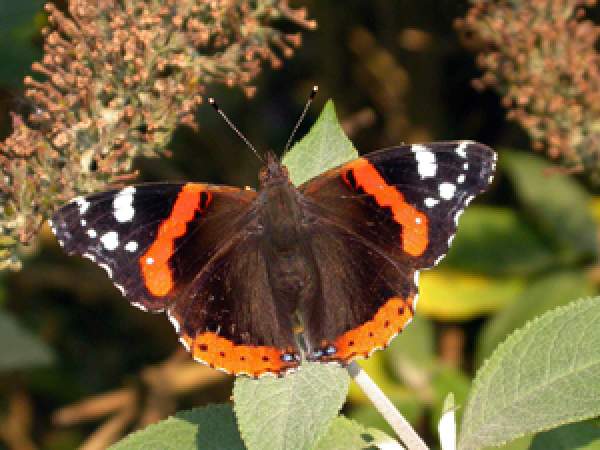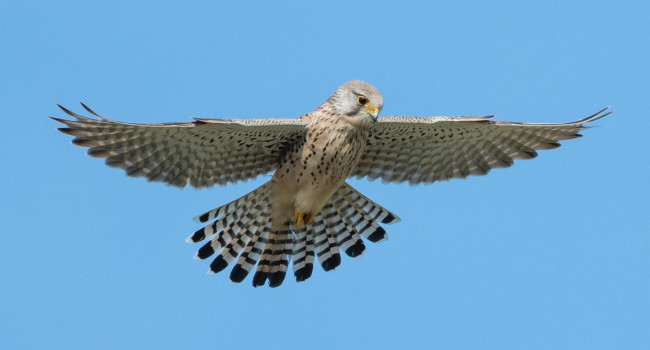Red Admiral
Vanessa atalanta

The Red Admiral is one of the most easily recognisable butterflies, and has distinctive patterning on the upper surfaces of the wings. Males and females are similar in appearance. When at rest, the underside of the forewing (which has a characteristic pattern) may be obscured by the hindwing. The hindwing itself appears quite dark, but has a pale patch on the top edge which is diagnostic
Because of its migrant status, the numbers of Red Admirals seen in Britain and Ireland can vary tremendously from one year to the next. With no specific habitat requirements and a widespread food plant (common nettle), the Red Admiral is found right across Britain & Ireland. However, it is most common in southern parts, and it is in these southern counties that most of the overwintering individuals appear to be reported.
The first wave of immigrants to arrive (from late March) are thought to originate in North Africa and southern Europe, where there is a large post-winter emergence. This is then followed by another wave, originating in Spain and Portugal and reaching our shores in May and June. A later influx probably originates from further north within western Europe.
Eggs are laid singly on the upper surface of young common nettle leaves (hop, small nettle and pellitory-of-the-wall may also be used as food plants). With the summer warmth, these can hatch in a about a week. The young caterpillar will make a small tent at the base of the leaf. As the caterpillar grows, it makes larger and more conspicuous tents, before finally pupating, suspended from the roof of a tent.
It is thought that adult Red Admirals mate before their northward journey, and this would explain why mating pairs are only seen rarely here in Britain and Ireland. This may also explain the reported southerly movement of adults in July and August. This familiar migrant has shown a significant long-term increase in numbers at sites monitored through the Butterfly Monitoring Scheme. There has also been an increase in the number of winter sightings.






Share this page